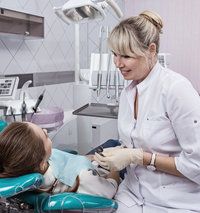Study Examines Why Gender Pay Gap Persists in Dentistry
Women have made many gains in dentistry. Consider that in 1982, they made up 3 percent of all practicing dentists in the U.S. By 2014, 47 percent of dental students were female. And yet, a gender pay gap persists among dentists. New research published in the Journal of the American Dental Association aims to understand why.

Despite many gains in the involvement of women in dentistry, a gender pay gap persists. New research published in the Journal of the American Dental Association attempts to understand why.
In 1982, women made up only 3 percent of practicing dentists in the U.S. By 2014, women represented 47 percent of students enrolled in dental programs. And by 2020, 28-30 percent of the dental workforce is expected to be women.
Yet, female dentists consistently earn less. In an attempt to understand gender pay differences, a new study in the Journal of the American Dental Association has examined the factors among three professional occupations, including dentistry, that could influence earnings.
RELATED: More Dental Industry News
· Board Clears Dentist in Toddler’s Death
· Dentists Hold Negative View of DSOs, Study Shows
· Sleep Apnea in Dentistry: The Business of Treating the Disorder
The study authors used data from the Integrated Public Use Microdata Series census and a five-year American Community Survey sample to identify a large sample of male and female dentists. Researchers constructed a basic earnings model using data related to several factors, including:
· Age
· Race
· Marital status
· Number of children
· Hours worked per week
· Weeks worked per year
· Whether the individual was a business owner
· Income level
· Gender
· Occupation
The results of the study showed that, while there has been progress in closing the wage gap, men still out earn women in dentistry. In 1990, male dentists made almost twice as much as female dentists, earning, on average, $143,874 — women brought home $65,744.
Researchers analyzed data from the two subsequent decades and determined that the difference in gender pay decreased. However, even in 2010, female dentists were still earning less than their male counterparts. In 2010, male dentists earned about $185,200, but female dentists only earned about $120,475. But in 2010, male dentists were also on averag, 11 years older than the women included in the study. Additionally, men were more likely to be self-employed and tended to work more hours per week and more weeks per year.
Still, the pay gap between men and women in dentistry persists. The study authors were not able to account for all variables that might influence the pay gap, and there are still significant unexplained differences in earnings that cannot be explained. They raised questions regarding the choice of dental specialty, employment history, and years at a particular dental practice or facility. Also, the researchers did not account for other factors that could influence earnings, like the size and location of a dental practice or time spend away from work due to illness.
Without a clear understanding of all the factors that could contribute to a difference in earnings, the authors caution against any policy changes that are created to help alleviate earnings differences. If a better understanding is not reached through further research and study, such changes could actually make the problem worse instead of better, they say.
ACTIVA BioACTIVE Bulk Flow Marks Pulpdent’s First Major Product Release in 4 Years
December 12th 2024Next-generation bulk-fill dental restorative raises the standard of care for bulk-fill procedures by providing natural remineralization support, while also overcoming current bulk-fill limitations.